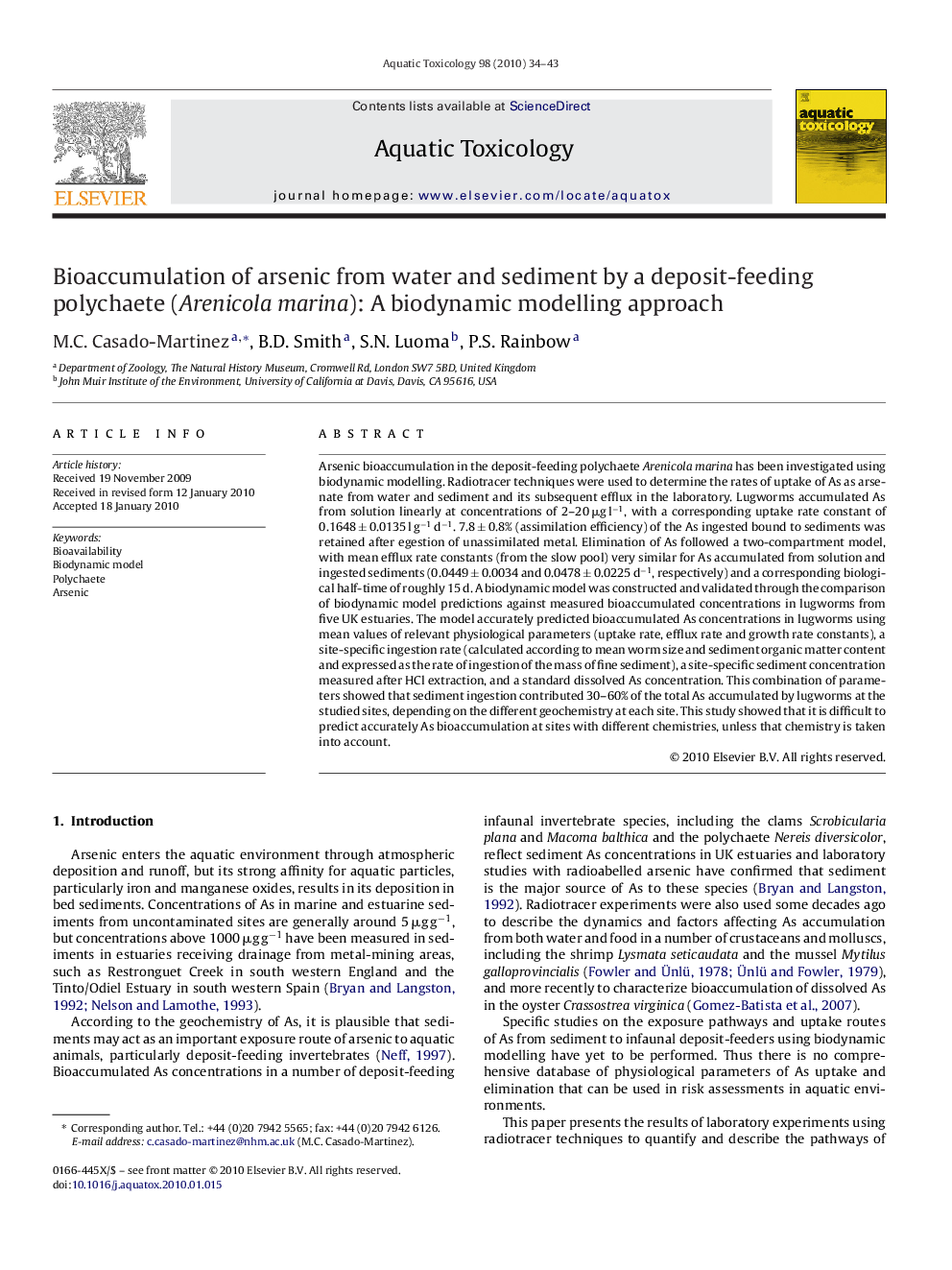| کد مقاله | کد نشریه | سال انتشار | مقاله انگلیسی | نسخه تمام متن |
|---|---|---|---|---|
| 4530444 | 1324704 | 2010 | 10 صفحه PDF | دانلود رایگان |

Arsenic bioaccumulation in the deposit-feeding polychaete Arenicola marina has been investigated using biodynamic modelling. Radiotracer techniques were used to determine the rates of uptake of As as arsenate from water and sediment and its subsequent efflux in the laboratory. Lugworms accumulated As from solution linearly at concentrations of 2–20 μg l−1, with a corresponding uptake rate constant of 0.1648 ± 0.0135 l g−1 d−1. 7.8 ± 0.8% (assimilation efficiency) of the As ingested bound to sediments was retained after egestion of unassimilated metal. Elimination of As followed a two-compartment model, with mean efflux rate constants (from the slow pool) very similar for As accumulated from solution and ingested sediments (0.0449 ± 0.0034 and 0.0478 ± 0.0225 d−1, respectively) and a corresponding biological half-time of roughly 15 d. A biodynamic model was constructed and validated through the comparison of biodynamic model predictions against measured bioaccumulated concentrations in lugworms from five UK estuaries. The model accurately predicted bioaccumulated As concentrations in lugworms using mean values of relevant physiological parameters (uptake rate, efflux rate and growth rate constants), a site-specific ingestion rate (calculated according to mean worm size and sediment organic matter content and expressed as the rate of ingestion of the mass of fine sediment), a site-specific sediment concentration measured after HCl extraction, and a standard dissolved As concentration. This combination of parameters showed that sediment ingestion contributed 30–60% of the total As accumulated by lugworms at the studied sites, depending on the different geochemistry at each site. This study showed that it is difficult to predict accurately As bioaccumulation at sites with different chemistries, unless that chemistry is taken into account.
Journal: Aquatic Toxicology - Volume 98, Issue 1, 1 June 2010, Pages 34–43